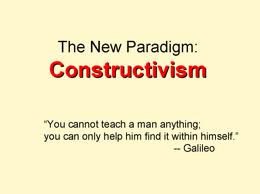Last week, I posted about the benefits of online bulletin boards, aka discussion boards. This week, I would like to show a different perspective on discussion boards–one that claims that they are not all they are cracked up to be.
“Interactive E-learning–Why Can’t We get Beyond Bulletin Boards?,” by William R. Klemm, argues that bulletin boards could be replaced by more effective technology in an online environment.
Contemporary models of exemplary pedagogical practice include constructivism and cooperative learning. Neither of these are supported well by discussion boards, but are well supported by the seldom-used environment of shared-document Web conferencing. – Klemm
Klemm begins by a definition of constructivism, stating that it allows students to build their own knowledge and have a product to show for it, such as a project or essay. He argues that such higher-order skills cannot be achieved through a standard discussion board. Like many other authors I have come across recently, he asserts that online learning provides more opportunities for learners to collaborate, simply because they can work on their own schedules, think clearer and for longer periods of time, be held accountable for their individual work at all times, and have their responses and ideas archived for later reference.
In addition to typical advantages held by discussion boards, shared documents, such as Google Docs, can be more helpful for a few key reasons, according to Klemm:
- help students stay organized
- get edits and feedback from multiple people
- no circulation is required
- connections are better made since all work is in one place
- annotations are evident
- messages are easier to view and locate
Essentially, Klemm claims that traditional methods of file sharing, such as through email or discussion boards, creates hardships for students because, overall, those methods are disorganized, chaotic, and difficult to access.
Much like Scott Warnock, Klemm suggests that teaching the same way online as in the classroom is one reason constructivism is not frequently embraced. For example, teachers who have lectured in the classroom tend to adhere to a more traditional method of content delivery online. Klemm also argues that teachers do not necessarily take to change, and many online teachers have poor background experiences with cooperative learning in an online environment. Warnock warns that team projects online may be challenging, but they are also rewarding, and Klemm seems to agree with that notion. Also, teachers feel compelled to use discussion boards since they are often part of the CMS for the course. Finally, Klemm argues that teachers are not properly informed about share systems. Since they may not feel comfortable with them or know where to look for resources, they tend to avoid them altogether.
I should point out that Klemm wrote this article in 2005, prior to the widespread popularity of file sharing programs like Google Docs. Although I believe that teachers are more comfortable with such technology today, discussion boards do still seem to be the main mode of operation for online courses. Clearly, the underlying principles of online discussion boards are solid and founded in educational frameworks that encourage collaboration, writing, and critical thinking. However, Klemm argues that file sharing can further enhance this learning experience for students and teachers alike.
Work Cited
Klemm, William R. “Interactive E-Learning – Why Can’t We Get Beyond Bulletin Boards?.” Journal Of Educational Technology & Society 8.3 (2005): 1-5. Academic Search Complete. Web. 10 July 2014.



